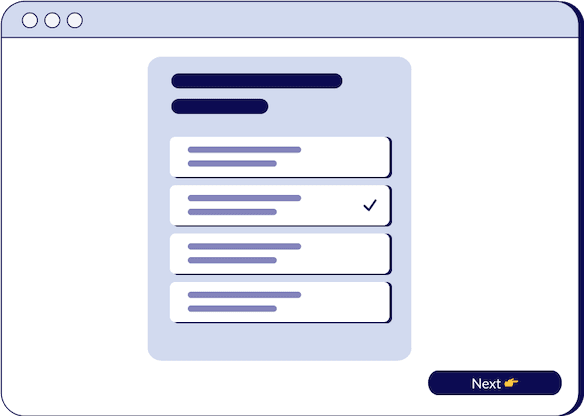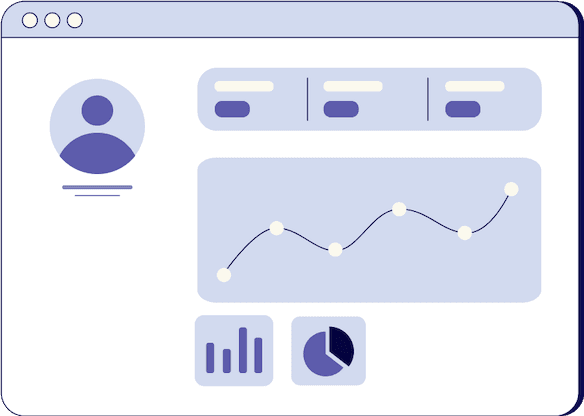
How To Follow Up Cold Emails (Template)
Patrick Dang
Sales Coach

- duration
- 8 min
- Average Score
- 75%
- Stars
- 5
Cold emailing is a powerful tool in any sales rep’s arsenal, but many are left disappointed when their initial emails fail to garner responses. The key to success lies in the follow-up. In this comprehensive guide, we will explore strategies to dramatically increase your cold email response rates through effective follow-up techniques.
Understanding the Goal of Cold Emails
Before diving into the strategies, it’s crucial to understand the primary goal of cold emailing. The sole objective is to secure a meeting with your potential customer, whether it’s over the phone or in person. This simple, clear goal should drive the structure and content of your emails.
The Importance of Follow-Ups
Most salespeople send out their first cold email and give up when they don’t get the desired response. However, the magic is in the follow-up. By not following up, you’re missing out on significant opportunities to increase your response rates.
Why Follow-Ups Work
Each follow-up email increases your chances of a response. Here’s an example from Patrick Dang’s experience as a sales rep in Silicon Valley:
- First email: 5% response rate
- First follow-up: Additional 4% response rate
- Second follow-up: Additional 6% response rate
- Third follow-up: Additional 3% response rate
Total response rate: 18% after four emails
This cumulative effect demonstrates the power of persistence in cold emailing.
Crafting Your Follow-Up Sequence
Email Sequence Structure
A well-structured follow-up sequence typically includes four emails:
- Initial email: Introduce yourself and your value proposition, and request a meeting.
- First follow-up: Send 3-7 days after the initial email, reiterate your value, and request a meeting.
- Second follow-up: Send another 3-7 days later, check in to see if they are still interested.
- Third follow-up: Send another 3-7 days later, summarize previous messages and request a meeting again.
Spacing Your Follow-Ups
Spacing your follow-up emails between 3-7 days is optimal. This timing keeps you on the prospect’s radar without being overly intrusive.
Writing Effective Follow-Up Emails
First Follow-Up
Keep it simple and to the point. Reference your initial email, reiterate the value you can provide, and include a call-to-action. Here’s an example format:
- Subject: Following up on my previous email
- Body: "Hi [Name], I wanted to follow up on my previous email to see if it still makes sense to discuss how we can [insert value proposition]. If so, please schedule a time on my calendar [insert link], or let me know what works best for you."
Second Follow-Up
Gently remind the prospect of your previous emails and express continued interest. Here’s an example:
- Subject: Checking in
- Body: "Hi [Name], Hope you're doing well. I'm checking in to see if you're still interested in [desired outcome]. Please let me know if you’d like to discuss further. You can schedule a time on my calendar [insert link], or let me know what works best for you."
Third Follow-Up
Summarize your previous attempts and express a final invitation to connect:
- Subject: Last attempt to connect
- Body: "Hi [Name], I wanted to follow up one last time regarding my previous emails. If you’re still interested in [value proposition], please let me know. You can schedule a time on my calendar [insert link], or let me know what works best for you."
Best Practices for Follow-Up Emails
Consistency and Persistence
Consistency is key. Each follow-up should reinforce your initial message and value proposition. Persistence often pays off, as many prospects may need multiple touchpoints before responding.
Personalization
Personalize each email to the recipient. Mention specifics about their business or pain points you can solve. Personalized emails show that you’ve done your homework and genuinely care about providing value.
Clear Call-to-Action
Always include a clear call-to-action. Whether it’s a link to schedule a meeting or a prompt to reply with available times, make it easy for the prospect to take the next step.
Follow-up emails are a critical component of a successful cold email campaign. By understanding the goal, crafting a well-structured follow-up sequence, and personalizing your approach, you can significantly increase your response rates. Remember, the magic is in the follow-up, so don’t give up after the first email. Persistence and consistency will help you achieve your sales goals.
By implementing these strategies, you can transform your cold email campaigns and see dramatic improvements in your response rates. Happy emailing!
How Triple Session works
Training, Testing, & Feedback
Triple Session's proven formula accelerates your sales performance through consistent, organized practice, backed by measurable results.

Bite-Sized Knowledge
Our expert-led video sessions simplify complex sales concepts into easy-to-digest 5-15 minute videos for better retention.

Test Your Understanding
After each session, there will be a quiz to test your understanding and help you improve on any areas that need more attention.

Evaluate and Grow
Get progress snapshots after each quiz to track your improvements and achieve your sales mastery goals.